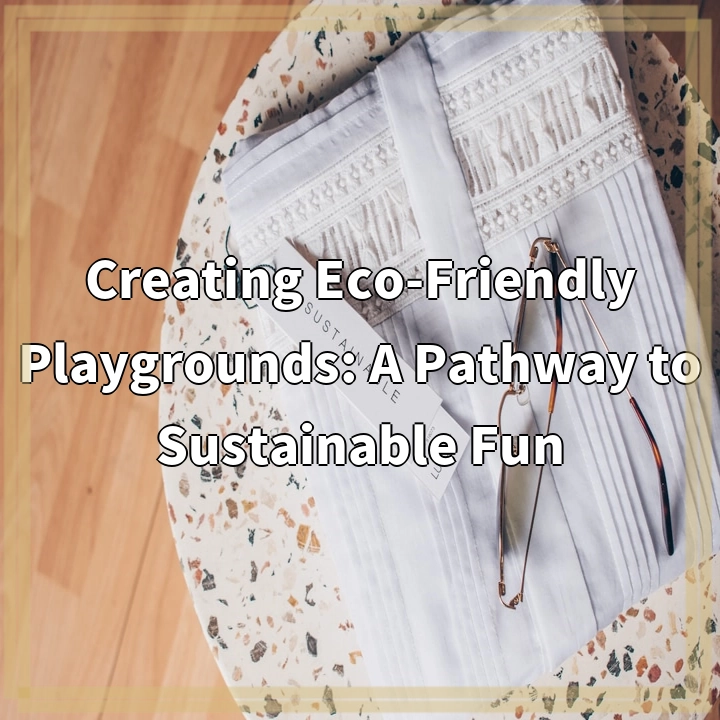
What it is:
Eco-friendly playgrounds are outdoor play areas designed with a focus on sustainability and environmental consciousness. These playgrounds not only provide fun and engaging spaces for children but also incorporate eco-friendly practices and features that minimize their impact on the environment. They aim to create a balance between play, nature, and sustainable practices, fostering a deeper connection with the natural world.
In an eco-friendly playground, you will find elements such as recycled or natural materials, native plants and trees, energy-efficient lighting, rainwater harvesting systems, and innovative play equipment that encourages physical activity while promoting eco-awareness. These playgrounds often prioritize the use of non-toxic and low-maintenance materials, reducing the use of harmful chemicals. Additionally, they may implement sustainable design strategies such as incorporating renewable energy sources, optimizing water conservation, and employing strategies to encourage waste reduction and recycling.
Real-World Problems Associated with Eco-Friendly Playgrounds:
While eco-friendly playgrounds offer numerous benefits and promote sustainable practices, they also face certain real-world challenges. These challenges can include:
1. High Initial Costs: Designing and building an eco-friendly playground can often involve higher upfront costs compared to traditional playgrounds. The use of environmentally friendly materials and technologies, as well as incorporating sustainable design features, can increase the overall project expenses. However, it’s worth noting that over time, eco-friendly playgrounds tend to have lower maintenance and operating costs.
2. Limited Accessibility: Incorporating sustainable features into playground designs, such as natural elements and non-toxic materials, may pose accessibility challenges for children with disabilities or mobility limitations. Careful consideration and innovative design solutions are necessary to ensure inclusivity in eco-friendly playgrounds.
3. Maintenance and Durability: Maintaining eco-friendly features in a playground requires ongoing attention and care. For example, natural materials like wood and plants may require regular maintenance, such as resealing, pruning, or replacing. It’s important to develop maintenance plans and engage qualified personnel to ensure the longevity and safety of the eco-friendly features.
4. Educational Awareness: Promoting eco-consciousness and environmental education within the context of the playground requires active engagement with children, parents, and communities. Creating awareness and instilling sustainable values can be a challenge and requires continuous efforts through signage, educational programs, and community involvement.
Overall, despite these challenges, eco-friendly playgrounds offer immense potential to create sustainable and inspiring spaces for children to play, learn, and connect with the environment. By addressing these real-world problems, we can unlock the full potential of eco-friendly playgrounds and pave the way for a more sustainable and fun future.

Solutions for Creating Eco-Friendly Playgrounds:
Creating eco-friendly playgrounds presents an opportunity to address the challenges mentioned earlier. Here are some solutions to overcome these real-world problems:
1. Cost-effective eco-friendly solutions:
By exploring cost-effective alternatives and innovative design approaches, the initial costs of eco-friendly playgrounds can be reduced. Local sourcing of materials, utilizing recycled elements, and engaging community volunteers can help minimize expenses while maintaining sustainability.
2. Inclusivity in design:
Designing playgrounds with inclusivity in mind can ensure that all children, including those with disabilities or mobility limitations, can access and enjoy the space. Incorporating accessible pathways, inclusive play equipment, and suitable seating areas can promote equal opportunities for play and enjoyment.
3. Proper maintenance and durability:
Developing comprehensive maintenance plans, involving trained staff, and utilizing durable and sustainable materials can help ensure that eco-friendly playgrounds are well-maintained. Regular inspections, ongoing repairs, and community involvement can contribute to the longevity of the playground features.
4. Environmental education and engagement:
Creating educational signage and interactive elements within the playground can foster environmental awareness and engagement. Developing educational programs, organizing workshops, and collaborating with schools and community groups can promote eco-consciousness among children and their families.
By implementing these solutions, eco-friendly playgrounds can become more accessible, sustainable, and beneficial for both children and the environment. They provide opportunities for play, learning, and appreciation of nature while promoting a sustainable and fun future.















